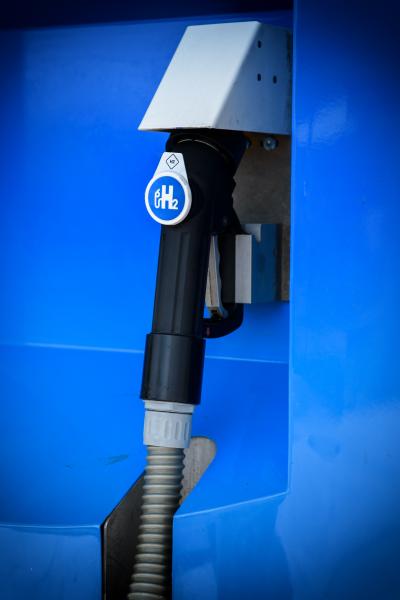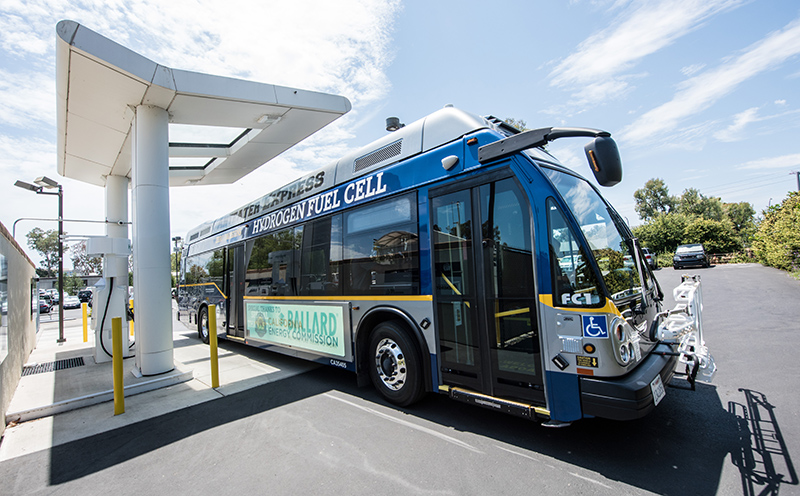
By: Jack Winterhalter, Washington Sea Grant Hershman Fellow

Through the Northwest Ports Clean Air Strategy, the Port of Seattle is committed to phasing out emissions from all seaport-related activities by 2050. This includes emissions from oceangoing vessels, cargo handling equipment, Port buildings, fuel use, and more. Many of the maritime operations of the Port and our tenants still rely on traditional petroleum-based fossil fuels. To transition away from fossil fuels, it is crucial that the maritime sector adopt next-generation fuels. These fuels are especially important where electrification and batteries aren’t feasible, such as activities that involve heavy duty machinery, long-haul trucks, and large vessels. Next-generation fuels will not only help the Port reach its environmental goals, but they’ll keep the Port competitive in a rapidly developing global clean energy economy and drive the creation of clean energy jobs across the region.
Multiple next generation fuels are at various stages of development around the world. One of these fuels is hydrogen, the most abundant element in the universe. Molecular hydrogen (H2) can be used as a fuel in a combustion engine, like gasoline and diesel fuel, or in specialized fuel cells to generate electricity through a chemical reaction with oxygen. Either way, the primary byproduct is water vapor. Combustion of hydrogen, however, can create nitrous oxide, a harmful air pollutant that is a common byproduct of the combustion of any fuel. These emissions can be mitigated and would not be generated at all by fuel cells. Not only can hydrogen be used as a fuel directly, but it is also a precursor to other alternative fuels, such as methanol and ammonia.
The Port’s hydrogen work
In pursuit of decarbonization, the Port is exploring a variety of pathways to advance alternative fuels and electrification. Seattle-Tacoma International Airport (SEA) has been involved in the development of sustainable aviation fuels since 2008 and the Port has played a role in the development of the Pacific Northwest to Alaska Green Corridor, which is studying the feasibility of powering cruise ships with green methanol. The Port is also considering including hydrogen as a potential fuel in a future suite of energy options.
As a potential end-user of hydrogen and hydrogen-derived fuels, the Port has an interest in supporting hydrogen fuel production and supply in the region. The Port, along with the Port of Tacoma and The Northwest Seaport Alliance (NWSA), has helped plan and develop the proposal for the Pacific Northwest Hydrogen Hub (PNWH2). The Hub is one of seven regional hubs selected in October 2023 and funded by the U.S. Department of Energy (DOE) to kickstart the U.S. hydrogen economy. The funding for these hubs brings together producers and consumers and adds needed investment to accelerate the research and infrastructure necessary to deploy clean hydrogen at scale. The goal of these hubs is to help bring down the cost of clean hydrogen to $1 per kilogram — a target set by the DOE’s Hydrogen Shot initiative. The PNWH2 Hub consists of eight sites, or “nodes”, that are developing projects to produce, store, transport, and use clean hydrogen. The Port of Seattle does not currently have any active projects but our partners at the NWSA are designing an incentive program to support the purchase and deployment of hydrogen fueled drayage trucks and cargo handling equipment. Since the NWSA operates marine cargo facilities on Port of Seattle and Port of Tacoma terminals, these new trucks and equipment would reduce greenhouse gas emissions and air pollutants across the gateway.
Accessing hydrogen storage in Seattle
In addition to planning and advocating for the PNWH2 Hub, the Pacific Northwest National Laboratory (PNNL), in collaboration with the Port and Seattle City Light (SCL), conducted a risk assessment of large-scale hydrogen storage. This two-year long study helped the DOE, Port, and SCL understand the risks involved in setting up and operating a large-scale hydrogen storage facility in an urban-industrial setting. The study found that while hydrogen deployment in the region faces natural hazards and comes with risks, there are engineering controls and systems that can be implemented for safe operation. This study also focused on developing effective stakeholder engagement with community members and initiated an ongoing conversation with the Duwamish Valley Port Community Action Team (PCAT) on next-generation fuels.
The Port also recently completed the Seattle Waterfront Clean Energy Strategy in partnership with the NWSA and SCL, creating a shared roadmap to electrify the Seattle waterfront through strategic infrastructure, technology investments, and joint implementation. This strategy identifies the investments needed to meet growing electricity demand as the maritime sector transitions away from fossil fuels. While traditional electrical infrastructure remains the most cost-effective solution, the strategy recommends ongoing evaluation of alternative energy sources, like hydrogen. As technology matures and costs come down, hydrogen fuel cell-based power is expected to play a role in mitigating peak electrical loads and adding resiliency to the system.
The current hydrogen landscape
While it is still expanding and scaling up, hydrogen technology is not new. In fact, California has been developing hydrogen fueling infrastructure since 2004 when the California Hydrogen Highway Network Initiative was established. Currently, California has around 50 public hydrogen fueling stations operating throughout the state, with more planned. These stations are inconspicuous and are strikingly similar to traditional gas stations. Roll out has been slow due to high costs of clean hydrogen fuel compared to fossil gasoline, but this network demonstrates the efficacy of hydrogen fuel cell vehicles in our region.

Nationally and globally, ports are starting to develop and utilize hydrogen fuel infrastructure and equipment. Because hydrogen can power vessels, equipment, and other heavy-duty machinery that batteries cannot, ports are well-positioned to serve as early adopters of hydrogen technology. A hydrogen fuel cell-powered gantry crane began commercial operations at the Port of Los Angeles in 2024, and the Port of Oakland recently received federal funding to demonstrate hydrogen fuel cell cargo handling equipment and a mobile refueler truck. The maritime sector in Europe is also making strides to expand hydrogen production and use. The Port of Rotterdam is establishing themselves as a hydrogen hub for production, import, storage, and use of renewable hydrogen fuel, and Shell will soon construct Europe’s first major renewable hydrogen plant. A Norwegian shipyard is also set to deliver the two largest hydrogen-powered ferries to date in 2026. Meanwhile, a company in South Korea is working on the country’s first hydrogen-powered tug boat, and ports in Japan have demonstrated hydrogen-powered forklifts and gantry cranes. These developments demonstrate growing momentum for hydrogen fuel as an end-use in the maritime sector.
The budding hydrogen industry is making progress but is not without its challenges. The International Energy Agency cites financial hurdles, regulatory uncertainty, and unclear demand signals as some of the reasons hydrogen projects are facing delays. Continued support from public and private institutions will be needed to get this nascent sector off the ground. The Port will continue to leverage its position as a hub for maritime activity in the Pacific Northwest to accelerate the development of the hydrogen ecosystem and hydrogen’s use as a key input into next-generation fuels, like green methanol and ammonia. Supporting these fuels is just one strategy that the Port is deploying to achieve its clean air and climate goals.
Read more on the technical and safety aspects of hydrogen as a fuel:
Five Fast Facts about Hydrogen
Subscribe to Evergreen for sustainability updates from the Port of Seattle







